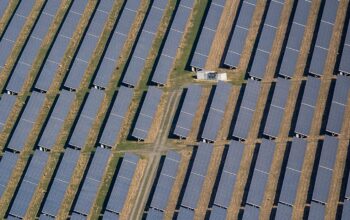Imagine a world where your city decides to ditch single-use plastics for an entire month. That’s exactly what Louisville, Kentucky, is doing with its Plastic Free July 2025 initiative. Spearheaded by local leaders like Mayor Craig Greenberg and council members Khalil Batshon and Betsy Ruhe, the effort encourages residents to swap disposable plastics for reusable alternatives, like carrying reusable water bottles or refusing plastic bags at stores. This movement is part of a larger momentum for cleaner, healthier living spaces and shows how community-led action can lead to big change. Pam Raidt, co-founder of Beyond Plastics Louisville, describes this campaign as a grassroots push to reduce pollution and celebrate businesses embracing sustainability.
In another part of the world, innovation is tackling water scarcity and industrial pollution in smart ways. Cambrian, a leader in advanced wastewater treatment, recently won international acclaim for their project with Anheuser-Busch in Houston. Their BlueCycle™ membrane bioreactor treats hundreds of thousands of gallons of brewery wastewater daily, returning it to near drinking-water quality. This treated water helps reduce fresh water usage onsite and cuts down carbon emissions by over 23,000 tons across 20 years. This project demonstrates how cutting-edge technology aligns with environmental and economic benefits.
Cooling down cities is also becoming a priority, with places like Australia’s Cumberland City introducing vine-covered ‘cool carparks’. These structures reduce asphalt surface temperatures by up to 50%, creating more pleasant urban spaces and lowering air temperatures nearby. This practical approach to climate adaptation amplifies comfort and cuts energy use for cooling.
Meanwhile, at the policy level, California recently adjusted environmental legislation to fast-track vital infrastructure. While this move relaxes some environmental review requirements for projects like water upgrades and electric vehicle plants, experts believe it could open doors for essential community developments without entirely sacrificing ecological safeguards.
These real-world stories offer a vivid picture of how diverse strategies—from community-driven campaigns and technological breakthroughs to smart infrastructure design and policy adjustments—are all vital threads weaving the fabric of environmental sustainability. The key takeaway? Action happens at many levels, and practical, relatable steps can collectively build a cleaner, healthier future for people and the planet alike.
References:
- https://www.lanereport.com/182267/2025/07/louisville-launches-plastic-free-july-2025-for-city-wide-sustainability-goals/
- https://www.greenlink.org/worldwide/
- https://abcnews.go.com/US/california-rolled-back-landmark-environmental-policy-means/story?id=123374098
- https://allianceforwaterefficiency.org/category/uncategorized/
- https://www.currentaffairs.org/news/trumps-scorched-earth-environmental-policies-will-harm-us-all
- https://www.oecd.org/en/publications/2025/06/advancing-adult-skills-through-individual-learning-accounts_f7fd9822/full-report/component-5.html
- https://www.mintz.com/insights-center/viewpoints/2151/2025-07-02-sustainable-energy-infrastructure-client-feature-july
- https://www.apru.org/event/apru-certificate-global-climate-change-leadership-2025/



